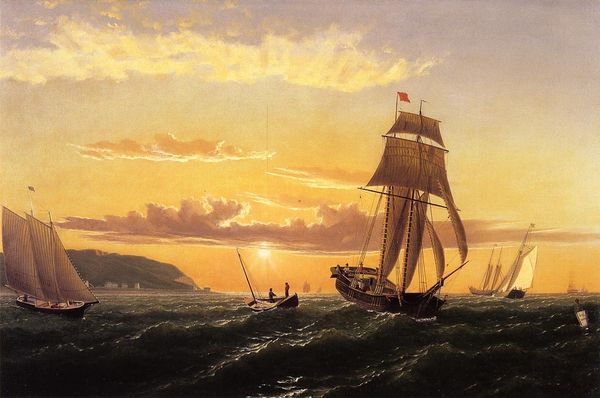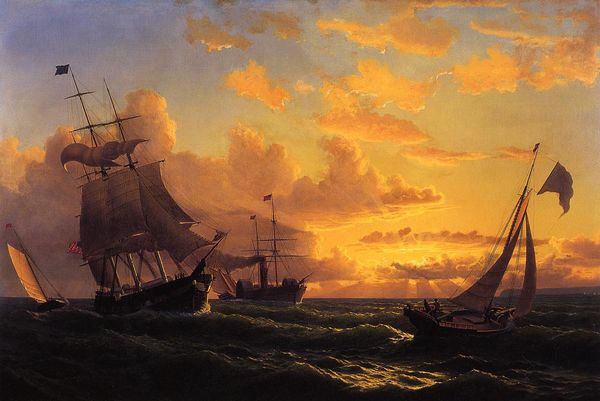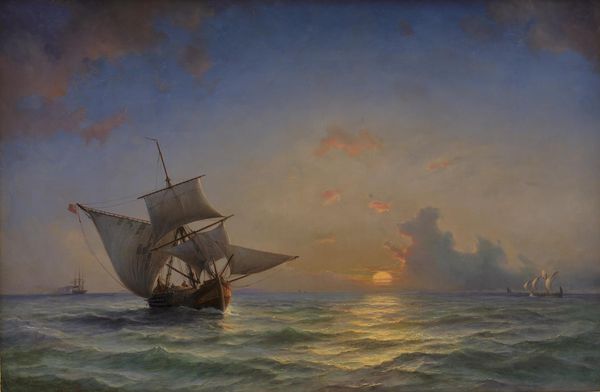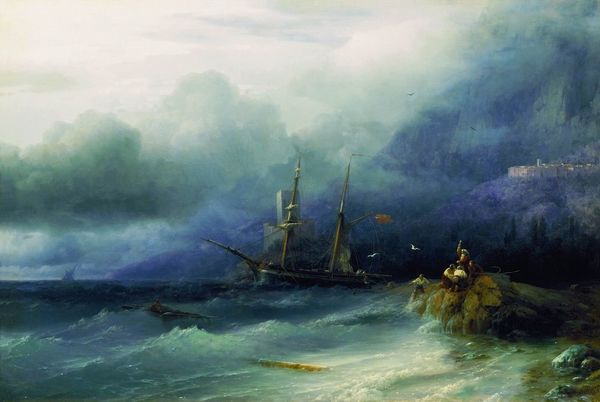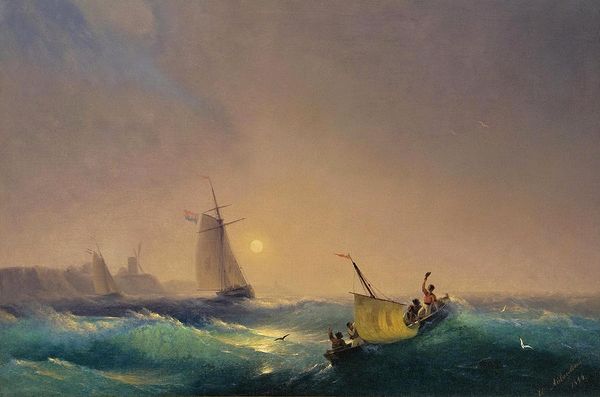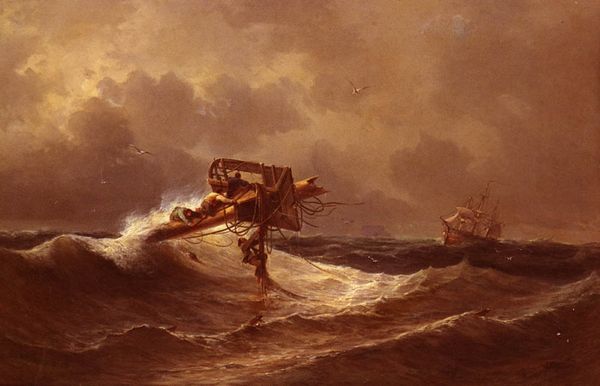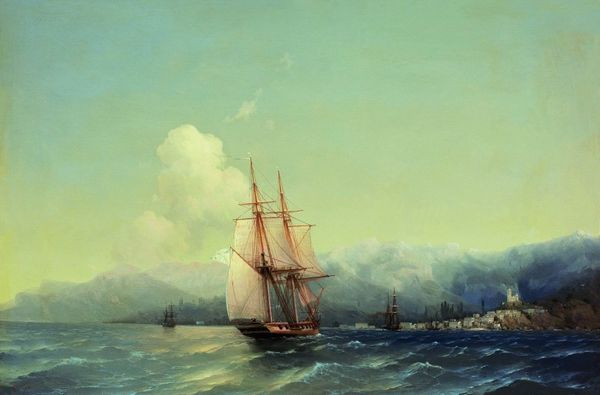
Dimensions: 109 x 131 cm
Copyright: Public domain
Curator: Let's explore Ivan Konstantinovich Aivazovsky's "American Shipping off the Rock of Gibraltar," painted in 1873. The sun-drenched scene immediately strikes me with its powerful, almost turbulent atmosphere. What's your first impression? Editor: Overwhelming. The sheer scale of the ocean against the dwarfed vessels highlights the precariousness of human endeavor against nature. There's a real tension here, almost a premonition. Curator: Absolutely. Aivazovsky masterfully captures that sense of dramatic vulnerability. He frequently painted maritime scenes, and often used the sea as a symbol of the sublime, a space of both terror and wonder. Editor: And notice the stark contrast he creates: a radiant, almost ethereal sky offset by the churning, dark turquoise waves below. That could be interpreted as commentary on power dynamics; the elevated, potentially "heavenly" realms versus the messy, uncontrollable earthly domain navigated by sailors. Curator: I'm drawn to the historical context. The Rock of Gibraltar held immense strategic importance in the 19th century, controlling access between the Atlantic and the Mediterranean. Aivazovsky highlights this hub of trade and colonial ambition, almost hinting at an interruption of global systems through ship wreckage. Editor: And consider the presence of those small figures crammed into the rescue boat. They’re rendered nearly anonymous, lost in the drama of the scene. Perhaps Aivazovsky critiques the romanticized view of maritime power by underscoring the human cost? The labor, the lives at risk... Curator: It's compelling how the ships become metaphors for human aspiration, and potentially folly. Romanticism favored this intense emotional response to nature, using symbolism to impart moral messages. He really pushes our feelings to the limits of control, the viewer feels swept away by the composition. Editor: Exactly. And through that specific depiction of American ships at Gibraltar, doesn’t he also provoke thoughts on trade routes, colonial power, and the movement of people across borders at this historical juncture? What's rescued, and who is left behind? Curator: I find that Aivazovsky creates this enduring meditation on the human condition, symbolized by those ships caught between the beckoning sunlight and the dangerous sea, a powerful metaphor for all of us. Editor: Yes, Aivazovsky leaves us contemplating those complex histories inscribed into a single dramatic seascape, reminding us to look critically at those grand, romantic narratives.
Comments
No comments
Be the first to comment and join the conversation on the ultimate creative platform.

